Complementary Foods
Complementary feeding is a critical concept. Breast feeding should continue and the foods the child is given on a spoon, should add nutritionally dense foods to the diet. The common understanding is that baby foods include rice, bread, rusks, cereals, biscuits, raisins and bananas. These are all inferior foods for infants, even if fortified with fibre or vitamins. Complementary foods should "complete" the diet offering what's missing from mothers milk. The South African Dietary Guidelines for Weaning recommend chicken, meat, fish, liver, and egg-yoke as true complementary foods. That's entirely correct and the guidelines don't place enough emphasis on that. We have to accept that in South Africa because of poverty, many mothers will feed mille-meal to their babies.
Porridge, cereals, bread and raisins in NZ.
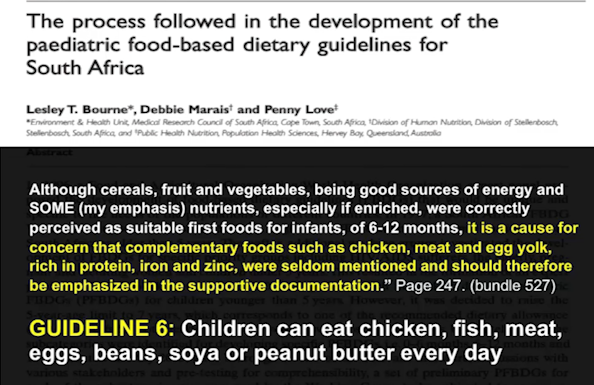
In her book "The Politics of Breast feeding: When breasts are bad for business" by Gabriella Palmer, she asks; "What foods are complementary to breast feeding and what foods are intended to replace breast feeding."
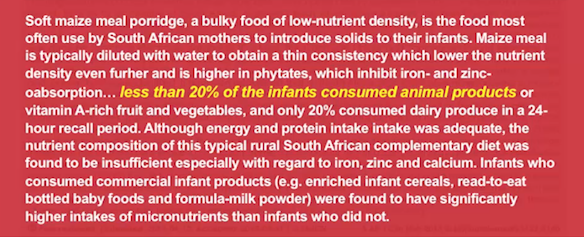
Breast milk is nutritionally superior to rusks, biscuits, breads and cereals commonly fed to infants. Adding iron and zinc to cereals does not make that iron and zinc bio-available to the child, because grains contain phytates that inhibit absorption. Biologically available iron and zinc is best supplied by eating meats, or offal or bone marrow.
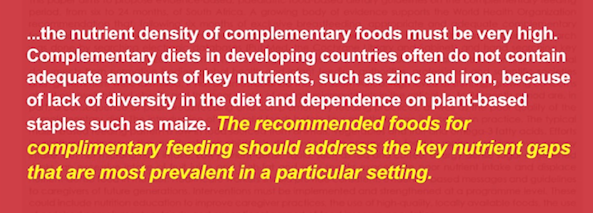
Plants are evolved not to be eaten, they have protective chemicals, anti-nutriments. During weaning, a vegetarian diet cannot meet the child's nutritional needs. Brain development requires nutriment dense foods, especially fat and protein, and the wide variety of vitamins and minerals best supplied by animal based foods.
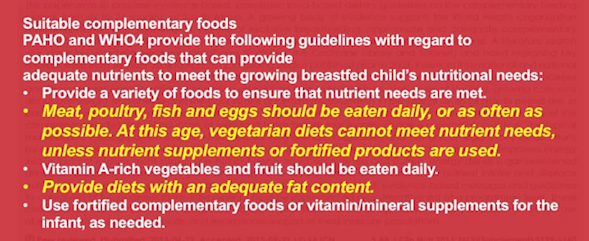
In a study lead by Prof. Nancy Krebs, at six months, exclusively breast fed infants were given either cereals or meats as the complementary food for the next 6 months. The infants in the meat group grew slightly large heads over that time, the amount of head growth being positively related to both zinc intake and protein in the diet.
The addition of 25gm of meat a day to home prepared vegetable meals for infants aged between seven and eight months was shown to increase the absorption of non-haem iron and also to prevent the decline of haemoglobin concentration in infants.
The mean daily absorption of zinc for children this age needs to be about 2mg a day. For infants in the meat group zinc absorption was 1.9mg, compared with 0.6mg for the cereal group.
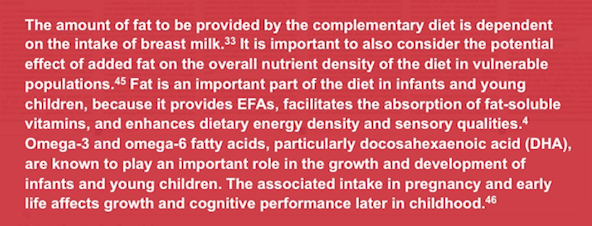
Dairy Foods
Dairy foods are also good complementary foods for babies, but iron is lacking. Fat is a significant part of breast milk, and as the child is weaned the fat content of the diet should not decrease, if brain development is to be maximized.
Leafy Green Vegetables and Coloured Vegetables
Green leafy vegetables and coloured vegetables are valuable in the diet. They are NOT nutriment dense, like meats, but they do bring small amounts of anti-oxidants and phyto-chemicals that are valuable in the diet.
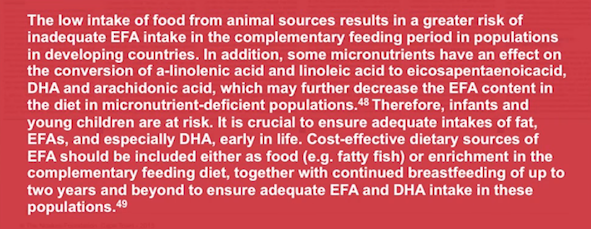
Excessive amounts of fruit are undesirable. Fruits contain too much sugar. They should be seasonal foods, but in our supermarket based food supply, fruit is available all year around and we can easily eat too much.
"Baby Foods" to Avoid
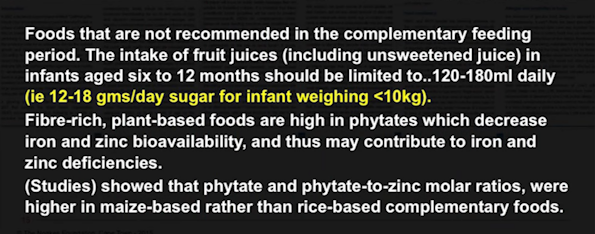
Fruit juices, and flour based foods like rusks, or cereals and bread, contain "energy" but very little nutriment. Porridge is filling, but it's not a quality food. Adding butter, cream, or chopped bacon to it would help increase the nutriment density.
Added sugar should be eliminated from the diet of children. Porridge or Weet-bix with sugar is a double bad.
Grain Based Foods are Insufficient
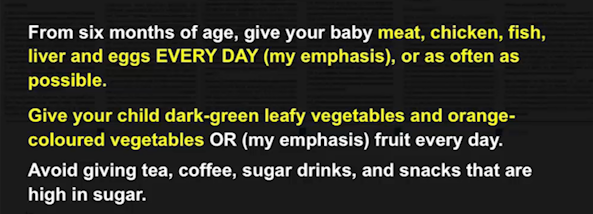
Because of poverty most children in South Africa are weaned onto soft maize meal porridge, a bulky food but with low nutriment density. It's insufficient in protein and fats, vitamin A, iron, zinc and calcium. In South Africa less that 20% of infants are given meat based foods, and only 20% get dairy products regularly.

